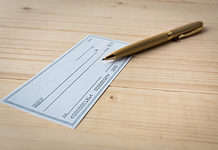A patent is a set of rights issued by a government to an inventor for a limited time. It provides the inventor with control over how their invention gets used. There are many reasons to acquire a patent, including protecting trade secrets against competitors. If you’re looking at how to get a patent for a design or idea, read further.
Obtaining a patent offers the inventor an avenue to extract wealth from their idea. However, applying for a patent is often a complex process. The application process comprises several steps, and an inventor must prove their invention is both new and valuable.
Understanding how patents work and the steps required to obtain one will help simplify the patent application process. Here are five simple steps if you’re wondering how to get a patent.

1. Know Everything About Your Invention
The first step in applying for a patent is understanding your invention. Identify the aspects that make your creation new and valuable and how it helps solve a problem.
A patent application must include a detailed invention description or claims. Patent claims are the section of your patent application that defines how your invention works and which features are covered by the patent.
The inventor must not only recognize their idea is unique, but they must also be able to explain how it works in plain language.
Along with claims, inventors should include any background information necessary to understand the invention and provide context on the claims. This approach helps to reduce ambiguity and prove your creation is unobvious.
Is there any other method of making your invention? If so, your idea may be an obvious modification of the existing creation. The modification doesn’t provide the same benefit as the original invention, and anyone can make it by changing a well-known structure or process.
Consider whether or not your invention has a broader application than your product or service. Describe your technology in terms of fewer features or a different design. For example, if you want to create a specific gadget, you must explain how the system works and is different from other devices already on the market.
For patients with a similar feature, describe how your particular invention is better and why it should get patented for the benefit of society. Understanding the distinction your creation adds to the world will help you describe how it works and differs from the others.
2. Do the Necessary Research
As we’ve established, a patent delivers exclusive rights and allows the inventor to control how the invention is used, built upon, and manufactured by others. It encourages the inventor to teach the public how to assemble, make, and use the invention.
Suppose a skilled person can make or use the invention described in your patent application from readily available information; then how does your creation differ from the already available technology currently on the market? Your idea’s novelty may be in doubt.
You must prove to the examiner that your invention is unique, not just different. Be sure to cite prior art throughout your application and explain how each new feature contrasts with existing technology.
Find relevant publications, patents, presentations, and sales brochures to help support your claim. This strategy allows you to describe how your invention works and provides a list of references for the examiner to review during their patent search for the same design.
You must disclose any written document, patent, or publication that you know could be relevant to your patent, according to the United States Patent and Trademark Office (USPTO). Failure to provide information will result in a rejection of your patent application.
3. Decide What Type of Patent You’ll Need
An inventor may apply for a design patent, utility patent, or a combination of both.
A design patent is different from a utility patent in that it protects the specific ornamental design of the object. Design patents protect the functional aspects of an invention that can only be used in one industry and are not legally enforceable against anyone but the inventor.
A utility patent protects functional aspects of an invention which can be used in any industry and is legally enforceable against everyone except the inventor. Utility patents are granted for the most inventive features and are generally patentable subject matter. Most of the patents filed at the USPTO are utility patents.
Carefully consider what industries you think could benefit from the innovation. Assess how your invention can get used before selecting the type of patent you will apply for. Evaluate your invention components, structure, and function, including its intended use.
Note that providing information in two categories may complicate the application process and preclude filing in one of the categories. If you decide to file in multiple categories, you must pay additional fees and make separate applications for each type you apply for.
4. Start Drafting Your Patent Application
Unsurprisingly, an unpatented idea is not worth much to the inventor. The USPTO requires an accurate description of how your invention works and what features it includes.
The application must include enough information to enable a skilled artisan of that field to fully understand how the invention works and how to build upon it. In addition, the inventor must explain each feature (or claim) in readable terms and identify their benefit to society.
Read the Manual of Patent Examining Procedure (MPEP) and follow the instructions to prepare your patent application and protect your invention. Make checklists for each segment of your application to avoid overlooking critical information.
Drafting a patent requires experience and teamwork. Use a patent professional’s help to ensure the application is written, concise, and follows all the necessary elements.
Related: Patent Pending Meaning and Use Cases
5. Wait for Feedback From the USPTO
Once you have filed a patent application, you must wait for a formal response from the USPTO. After submitting your application, it can take twelve months to get an answer from the USPTO.
Still, it could take longer if, during the initial review phase, inspectors uncover any problems with your application. If your initial action indicates any other issues with your patent application, you will also need to reply and address each of their concerns.
Meanwhile, it is vital to continue to work on your product. As the inventor, you must continue manufacturing, building prototypes, testing, and perfecting your product.
Final Thoughts on How To Get a Patent on an Idea
The patent application process is an exciting phase in the life of every inventor. Every inventor wants to prove their hard work and ingenuity with a patent, but these steps are essential to avoid disappointment.
You should spend a great deal of time, effort, and money before filing your application with the USPTO to ensure that it’s complete, accurate, and follows all required elements. Once you have filed, you must await the response within twelve to eighteen months.



















